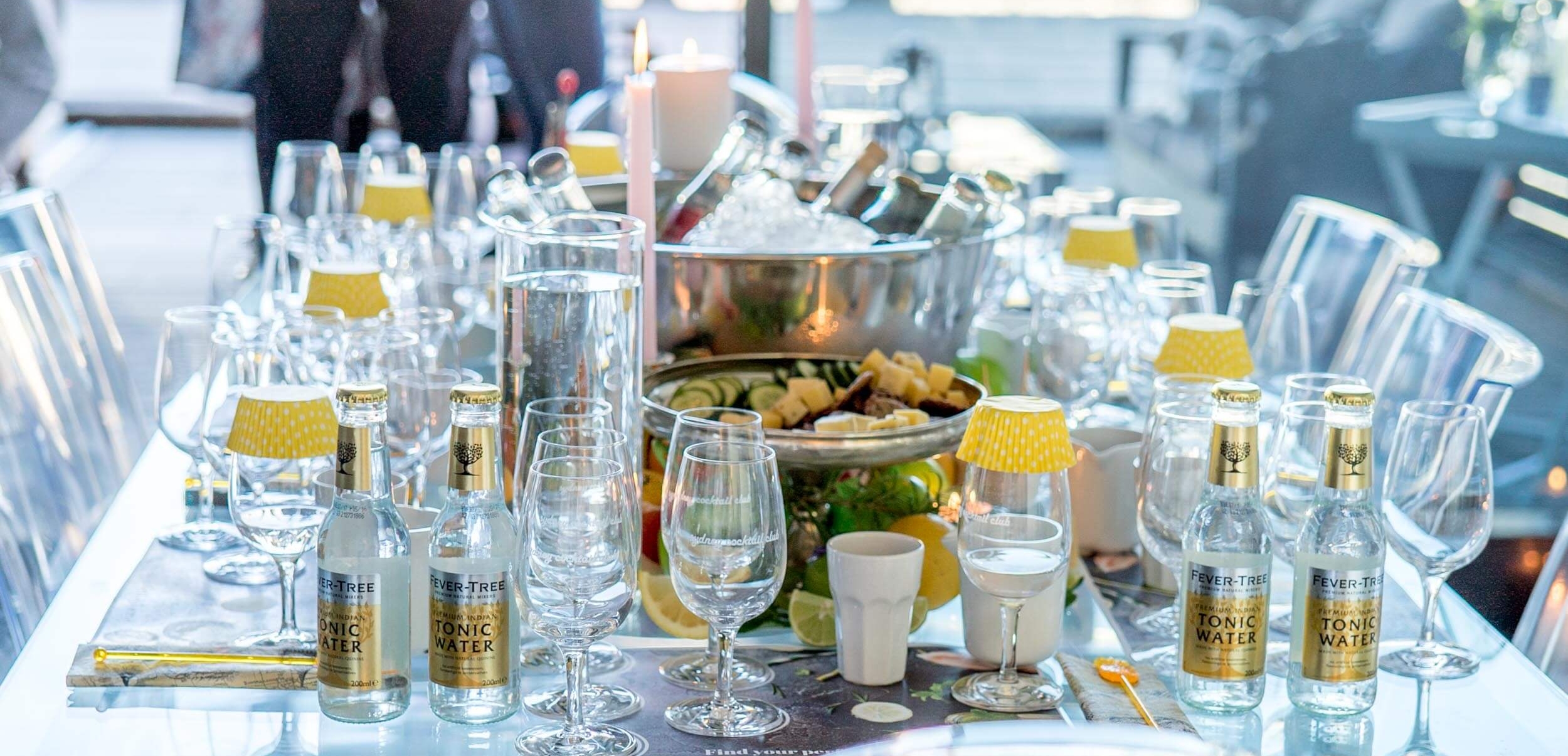What is tonic water? An introduction to gin's most famous partner in crime
A brief guide to what you need to know about the tonic water
Gin and tonics. A marriage made in heaven. But how often have you carefully chosen your gin only to grab the first available tonic water you see on your (or the supermarket's) shelf? In much the way that not all gin taste the same, not all tonics are equal. With an increasing number of tonic water choices available now, here's a short guide to tonic water to help you tell one from another. But first, let's get started with the basics.
What is tonic water and how do you make it?
Tonic water as we know it is effectively carbonated water infused with quinine and to which sugar (as well as other flavouring agents) are added. The process of carbonating water involves dissolving carbon dioxide into the water using pressure (aka charging it with the gas). It is this process that results in the fizziness tonic water is associated with. Much like juniper forms the backbone of gin, it is however, quinine that gives tonic water that signature bitter bite, and sets it apart from say, soda or sparkling mineral water.
What is the key ingredient in tonic water?
That would be quinine. Derived from the bark of the cinchona tree and native to South America, there are now hybrids of the species in other regions, such as South Africa and Java in South East Asia. Historically recorded to be used to treat malaria (also known colloquially as “the fever”), its use over the years has also been recorded to cover a myriad of ailments, from failing appetites to haemorrhoids and leg cramps. The first documented use of quinine for medicinal purposes is believed to have been recorded in the 1600s.
History of tonic water
The most widely peddled (and accepted) theory is that British soldiers stationed in India in the 19th century were given quinine to ward off malaria. To counter the bitterness of the quinine, the soldiers found that adding it to soda water with sugar and citrus made the medicine easier to swallow. This was in effect the birth of tonic water, albeit in very rudimentary form and also the baseline for the modern day reference to “Indian tonic water.”
What was the first commercial tonic water on the market?
Englishman Erasmus Bond is said to have released the first commercial brand of tonic water in 1858 but the brand is not known to have survived to the modern era (though there is now a Belgian brand of tonic waters by the same name). Joseph Schweppes followed in 1870 with his Indian tonic water. Schweppes would go on to dominate the global market with its brand of tonic water until a new challenger arrived in the form of Fever-Tree.
Rise of the “craft” tonic water
With the increasing interest in boutique gin and therefore the number of gin and tonics being consumed, it was only a matter of time before alternatives to the big name tonics (i.e. Schweppes) reared their heads. This came in the form of the British-based Fever-Tree who first burst on the market with their tonic in 2005. With an ethos of using the highest quality natural ingredients, their tag-line of “if 3/4 of your G&T is the tonic, make sure you use the best” soon captured the hearts and minds of increasingly savvy drinkers. It would take some years for that movement to take hold, but take hold it did and other “craft” tonic brands from all around the world soon followed, all with a similar mission of using natural high quality ingredients to create a tonic worthy of complementing the array of boutique gins now available. In Australia, Capi became the first commercially available local tonic water brand when it started production in Victoria in 2012.
Can you make tonic water at home?
Technically yes. Carbonating water is easy enough with machines like Soda Stream readily available at a reasonable price. Whilst pure quinine extract is difficult to come by for the average consumer at home, you can buy cinchona bark from selected herbalists or pharmacies (Newton Pharmacy in Sydney sells them in store and online) and play around with incorporating it into your carbon dioxide charged water. HOWEVER, if you don’t know what you’re doing, you could be putting your life at risk. Why? Quinine in excessive quantities can be fatal. There is in fact a condition known as cinchonism which results from an overdose of quinine. Symptoms include nausea, vomiting, dizziness and tinnitus (ringing in the ears). Many countries regulate the level of quinine in food and drink and Australia is no different, requiring the use of quinine in water based flavoured drink to not exceed 100 milligrams (or 0.1 gram) per kg. Now, in case you thought you could simply measure the cinchona bark chunks you get from the pharmacy, take note that the bark doesn’t yield 100% pure quinine. And whilst you may be able to lay your hands on powdered cinchona bark, beware as you may not be able to strain it out completely. This article by Camper English on Alcademics highlights the dangers of trying to DIY tonic and breaks down the numbers in more detail.
OK, so best to leave it to the experts. What's the difference between all the brands out there? Read the next instalment here where we go through a few of the factors to watch out for.
Or if you're getting thirsty, check out our Tonic Tasting Set and get drinking


